I like the idea of preserves. The thought that you can take the best of a season and bottle it to enjoy months later is lovely. How excellent to be able to bring a little bit of summer with you into the cold and dark months at the beginning of the year, or that you could enjoy the warm, cozy flavours of autumn on a rainy spring morning. It’s like a culinary time machine. Very exciting.
Exciting as it may be, I must admit my experience with preserving is extremely limited. I’ve made cranberry sauce and mincemeat for the last few Christmases, have made jam once, and curd twice. And that’s about it. So when my neighbor gave me this book Forgotten Skills of Cooking by Darina Allen (which is, incidentally an absolute treasure trove of a book) I was fascinated to read about all of the various forms of preserving including fruit butter and cheese. This is something I’d never heard of and at first I assumed that it must be similar to curd but involving dairy. However this is not the case at all. Fruit butter is an extraordinarily simple method of making a soft fruit spread, the finished consistency of which is similar to butter, hence the name (fruit cheese is the same thing but cooked for longer so that it thickens to the point where it can be sliced).
According to Darina Allen this method came about as a result of a thrifty mindset, and basically as a bi-product of jelly making. Back then the juice would have been squeezed from the fruit to make jelly and the leftover fruit pulp would be cooked to make fruit butter.
Unlike most other preserving methods such as jam making, fruit butter is a soft spread that is “cooked down” without the need for it to set or gel. Because of this it doesn’t require the addition of pectin, nor does it require the amount of sugar that’s necessary to make jam. The sweetener in fruit butter, as far as I can tell, is primarily for flavouring. For my purposes of minimizing my consumption of processed sugar, this makes fruit butter an excellent choice. In fact, in the recipe below for squash butter I used a few dates, some apple juice and a lot of spice to sweeten it, and then just slowly added maple syrup until it tasted nice, and as a result used a scant 75mL (that’s 5Tbsp) maple syrup for two squashes worth of this preserve, and I think you could probably cut this down or out all together with the addition of a few more dates, and if you wanted it a little less sweet. There is a really excellent website, Mother Earth News which covers a whole variety of do-it-yourself topics, and they have a great article explaining fruit butter and its differences from other preserves. Well worth checking out!
As for the method, it’s exceedingly simple:
- Make puree from your produce by roasting, steaming or simmering and then blending.
- Add the sweetener and any flavourings you’re using to the puree and stir until combined.
- Cook, covered, on low heat on the stove top, in a slow cooker, or in the oven, for 6-8 hours, stirring from time to time to make sure it’s not sticking, and removing the lid for the last little while if you want it to thicken up more. Let it cook until it’s quite thick and reduced.
- Strain it through a fine seive and bottle.
As for the canning process, most fruit butters can be canned according to conventional canning methods and stored for extended periods as is, but because of the higher pH of squash, pumpkin, carrot and root veg, if you’re making fruit butter involving these it’s not safe to keep for a long time canned in that way, so it’s best to freeze it.
The recipe that I’ve shared below is for squash butter. It’s my take on pumpkin butter, but as pumpkin’s not available here yet I went for my favourite stand by of butternut squash. I really really love pumpkin and squash and the beautiful spicy flavours that complement them so well, and I’m really pleased with how it turned out. It is autumn in a jar. I’ve frozen some of it and kept some in the fridge. It’s delicious spread on toast or scones, but you can also use it in baking (stand by for a recipe incorporating it in the next few days!), stirred into porridge, blended into smoothies, dolloped on frozen banana or on yogurt, or as a dip for apple slices.
I love it when I come across stuff like this. Making fruit butter is simple, allows you to be as creative as you want, and provides a really versatile, insanely delicious and really healthy end product that you can store and enjoy throughout the year. Next step for me will be to grow my own stuff to use in it!!
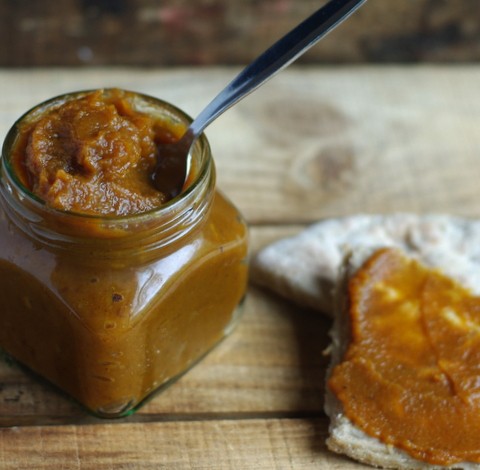

- 800g squash puree (butternut or other, or pumpkin)
- 150mL apple juice
- 75mL maple syrup
- 4 dates, chopped (or 2-3 if using medjool)
- Juice of half of a lemon
- 1Tbsp ground cinnamon
- 1tsp ground ginger
- 1/4tsp ground nutmeg
- 1/4tsp ground cloves
- 1tsp vanilla extract (optional)
- Combine all ingredients in a large pot, slow cooker, or oven proof dish and stir to combine evenly.
- Using low heat, allow the butter to cook,covered, stirring occasionally to ensure it’s not sticking, for about 6 hours.
- Check to see if the mixture is thick and reduced. If not continue to cook it for a bit longer, remove the lid if you would like more of the moisture to evaporate.
- Remove from the heat and allow to cool completely before storing in the fridge or freezing for long term storage.
- To make the squash puree, halve the squash length wise and remove the seeds. Set it cut side down in a roasting tin with a splash of water and put it in a medium hot oven to cook. Once it's very soft remove it from the oven and allow it to cool and then scoop the flesh from the skin and blitz it in a blender until smooth.

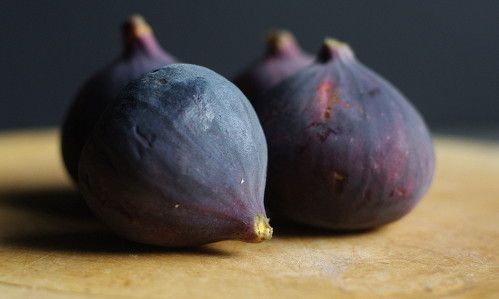
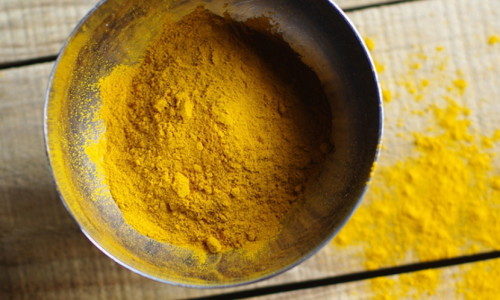
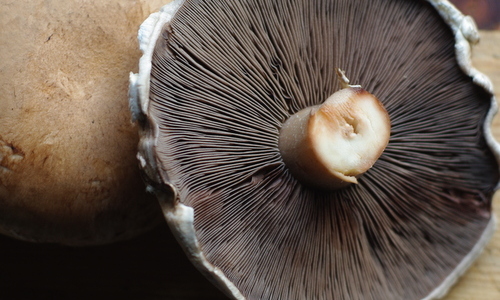
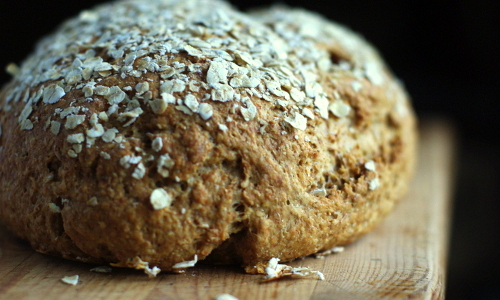

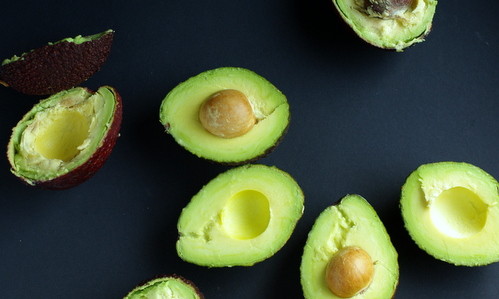
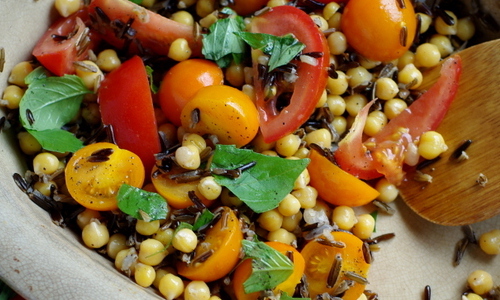
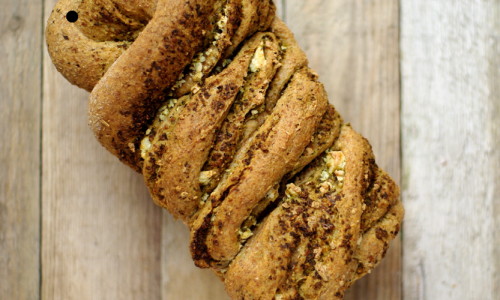
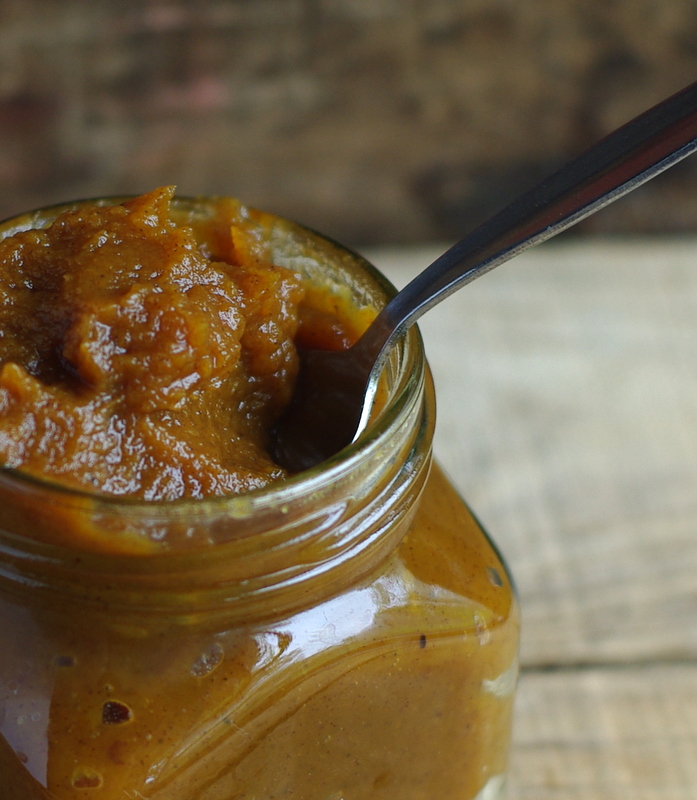
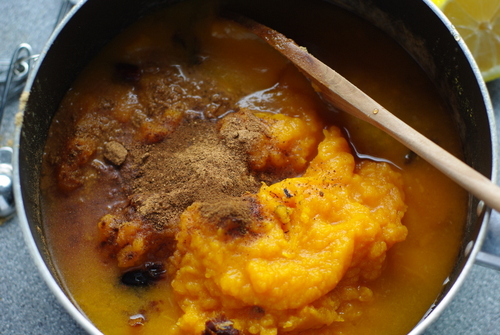
this seems like a perfect thanksgiving/ halloween recipe 🙂
I think so too. This autumnal stuff is my favourite! I made a lovely loaf/cake thing yesterday using this squash butter and it turned out really nicely. I’m going to put the recipe up in a few days…I have to make an other one first because we ate the first one before I could photograph it! lol!
Hi! Would this recipe work for spaghetti squash? Every recipe I’m interested in says, “except spaghetti squash”!
Hi!! I haven’t had spaghetti squash in years as it’s not available here in Shetland! It’s lovely though! I really can’t see why it wouldn’t work for this recipe. Because this uses the pureed flesh of the squash the stringiness of spaghetti squash wouldn’t really be an issue at all I wouldn’t think. The only other reason I could think that other recipes might say “except spaghetti squash” could be because if its high water content? But again, in this recipe, because it’s cooked down, if there’s too much water you can just cook it for longer! And if there’s any residual excess fiber-y bits you can always pass it through a sieve. I would definitely give it a try! If I could get one here I’d try it out myself, sounds lovely! If you do try it please let me know how it turns out!!